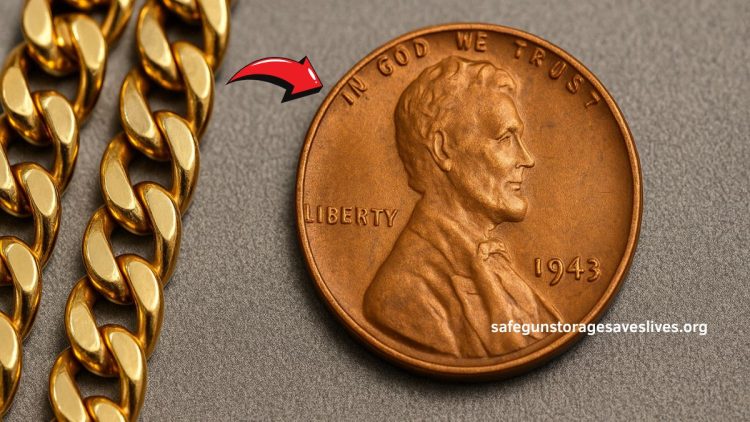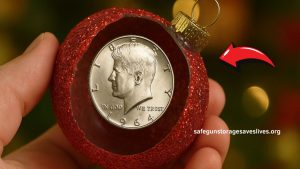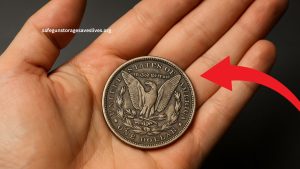What seems like a simple penny could actually be worth thousands—or even more. A rare Lincoln penny, long overlooked in jars or drawers, has made headlines for its incredible value.
One version of this coin is so special that it can be worth more than a gold chain, and collectors across the U.S. are scrambling to find it.
The Lincoln Penny That Stunned Collectors
The penny causing a stir is none other than the 1943 Bronze Lincoln Cent. During World War II, the U.S. Mint switched from copper to zinc-coated steel to preserve copper for military use. But a few bronze blanks from the prior year accidentally made it through the production process.
These copper-colored coins were not meant to exist, which makes them incredibly rare and valuable today.
What Makes This Penny Worth Thousands
The uniqueness of this penny comes down to:
- Minting error – Bronze planchets used instead of steel in 1943.
- Limited quantity – Fewer than 20 verified examples exist.
- High demand – Error coins are a favorite among collectors.
- Historic context – Wartime changes increased its significance.
Coins in pristine Mint State condition have sold for more than $1 million, while circulated versions can still be worth tens of thousands.
Other Valuable Lincoln Pennies to Look Out For
While the 1943 Bronze Cent is the headliner, several other Lincoln cents are known to hold serious value.
| Coin | Key Feature | Approximate Value |
|---|---|---|
| 1943 Bronze Lincoln Cent | Wrong metal (bronze instead of steel) | Up to $1,000,000+ |
| 1955 Doubled Die Obverse | Strong doubling of date/text | Up to $75,000 |
| 1922 No D Lincoln Penny | Missing Denver mint mark | Up to $100,000 |
| 1909-S VDB Lincoln Cent | Low mintage, designer initials “VDB” | Up to $168,000 |
| 1969-S Doubled Die Obverse | Bold doubling on front text | Up to $35,000 |
These coins may appear ordinary at first glance but often feature subtle errors or markings that increase their value significantly.
How to Spot a Valuable Lincoln Penny
Want to know if your penny is worth more than just one cent? Here’s what to do:
1. Check the Year and Mint Mark
Look for key years like 1909, 1922, 1943, 1955, and 1969. Also, check for missing or unusual mint marks like “S” (San Francisco) or “D” (Denver).
2. Look for Doubling or Errors
Some pennies have doubled letters or numbers, which are extremely desirable.
3. Use a Magnet
If your 1943 penny sticks to a magnet, it’s steel. If it doesn’t, it could be the rare bronze version.
4. Check the Condition
Coins in Mint State (MS-60 and above) are more valuable. Scratches, discoloration, or heavy wear can decrease worth.
5. Get a Professional Appraisal
If you suspect your coin is special, consult a certified grading service or local coin expert to verify its authenticity.
Why Collectors Are Going Crazy
The appeal of these rare Lincoln cents is universal:
- They can be found in circulation—meaning it’s possible to discover one in your loose change.
- Their value can rival or surpass luxury items like gold chains or designer watches.
- They tell a unique story of American history, error, and chance.
A tiny Lincoln penny may not seem worth much, but some are now being valued at over a million dollars due to rare flaws, historical quirks, and limited mintage. These hidden gems could be sitting unnoticed in old jars, wallets, or inherited collections.
If you find a penny with an unusual color, missing mint mark, or doubled image—don’t toss it. Take a closer look. It might just be worth more than gold.
FAQs
How can I tell if my 1943 penny is the valuable bronze version?
Try using a magnet. If it doesn’t stick, it may be bronze. Also check for a reddish tint and consult a professional grader.
Is every old Lincoln penny valuable?
No. While some are worth a lot, many are still only worth face value. Key dates, minting errors, and condition are what matter most.
Where can I sell a rare Lincoln penny?
You can sell through auction houses, coin dealers, or online marketplaces—preferably after getting the coin professionally graded.




